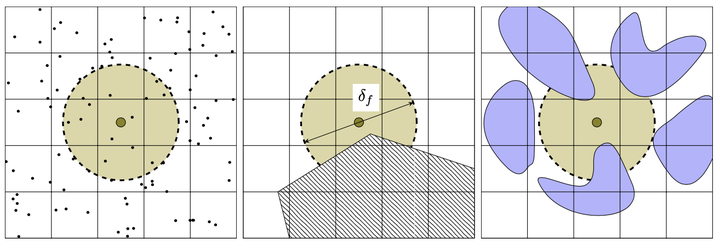Bridging the gap in multiphase flow simulations

Funding: National Science Foundation, CBET - Fluid Dynamics award #2028617 (2020 – 2023) & EEC - GOALI award #2216969.
Understanding and predicting the dynamics of multiphase flows bares significant importance as these flows are found in everyday life and engineering applications. In nature, flows that involve two phases or more include clouds, dust storms and sediment transport in rivers. Fuel sprays, pharmaceutical sprays to treat pulmonary infections and diseases, fluidized beds, pneumatic transport, powder processing and bubble column reactors are among the many applications relying on multiphase flows. Unlike single-phase flows which have established methods, simulations of two-phase flows are far more challenging due to the added complexity and cost required to deal with discontinuities, mass and momentum exchange at the interface separating the two phases. Despite decades of growing computational power, deployment of state-of-the art multiphase flow solvers remains exclusive to well curated and simplified academic flows, while application configurations remain out of reach. The goal of this project is to develop numerical strategies that retains high-fidelity yet reduces the computational cost by resolving the large-scale interfacial dynamics and modeling the small-scale effects using computationally efficient methods. This research will benefit a wide range of industries where multiphase flow simulations are routinely conducted to inform the design of engineering systems. The reduced computational cost will enable simulations of real-life flows in regimes previously inaccessible. The project also aims at inspiring young kids to pursue careers related to fluid mechanics through an experiential learning module delivered during an outreach event in a digitally-enhanced performance arts stage at Arizona State University. Graduate and undergraduate students will receive stronger professional preparation and training through involvement in research.